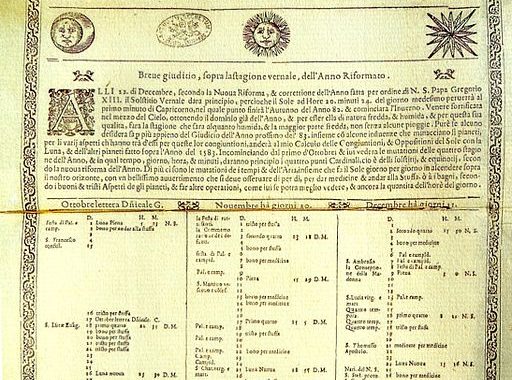
Once every four years, February 29 appears on our calendars, and we celebrate leap day. The Catholic Church’s official collection of saints, the Martyrologium Romanum, only lists four saints on this date.
This is surprising since the number of entries for a given date in the Martyrologium ranges anywhere from a half dozen to almost two dozen—and some of those entries include large numbers of martyrs. (Note that there have been many collections of Catholic saints issued over the centuries; the first Martyrologium Romanum dates to 1583, and the latest revision is dated 2004 and available only in Latin.)
On the other hand, since leap days occur only once every four years, it’s not surprising that there aren’t many saints celebrated on this date. The Martyrologium lists all four of these saints on February 28 as well as February 29, encouraging us not to overlook them.
Why are these saints listed on a date that only occurs once every four years? Because that’s the date on which they died.
Auguste Chapdelaine (1814-1856) was a French priest who was sent as a missionary to China. After being robbed on the way and then arrested briefly by the authorities, he finally met the Catholic faithful in his assigned city, Yaoshan. He was able to live among the Chinese people, serve them as their priest, and bring others to the faith for about two years. When the government began a widespread persecution of Christians, he was imprisoned again, this time on the false charge of encouraging an insurrection against the government. When he failed to recant or pay the hefty fine imposed upon him, he was tortured and imprisoned in an iron cage before finally being condemned to death. He died a martyr for the faith on leap day in 1856.
Long before him, Pope Hilary (sometimes called Hilarus or Hilarius) died of natural causes on this date in the year 468. He was the forty-sixth pope, and he is best remembered for building a church dedicated to Saint John the Evangelist, whom he credited for his narrow escape from an attack instigated by supporters of the Monophysite heresy in 449. Hilary not only remembered Saint John’s intercession and protection; he remembered the dangers of this heresy and its supporters and formally condemned the heresy when he became pope.
The two other saints commemorated on this date are: Blessed Antonia of Florence (1400-1472), a wife, mother, widow, and later a Poor Clare nun; and Saint Oswald of Worcester (d. 992), who became archbishop of York but was best remembered for daily washing the feet of the poor.
But leap day means more to the Church than the celebration of a handful of saints. While we moderns tend to think of leap day as more of a scientific oddity than anything else, we forget that dates matter to us Catholics too. We also tend to believe that the accurate determination of the calendar is something that has only been made possible by modern science.
But that’s wrong. A major reform the calendar was ordered by Julius Caesar in 46 B.C., under the advice of prominent mathematicians and astronomers of the time. The Roman Empire changed the calendar—now called the Julian calendar after him—so that the calendar would more accurately match the sun’s behavior. Failing to properly calculate the length of the year had gradually allowed the calendar to creep away from the true date. The date on the calendar that should have been the shortest day of the year, for example, wasn’t the shortest day of the year.
This caused all sorts of problems in the ancient world. Politicians adjusted the calendar as they saw fit to extend their time in office, ordinary people living away from big cities couldn’t accurately know the correct date, and intermediate adjustments to the calendar had only made things worse. The Julian calendar fixed all that.
Well, it fixed the problem for a while. By the sixteenth century, the calendar had slowly shifted again, all because it takes the earth 365.2422 days to travel around the sun, not 365.25 days. During the pontificate of Pope Gregory XIII, this problem had become so pronounced that ten erroneous days needed to be removed from the calendar. There was also a minor adjustment made to leap days; only centurial years that are multiples of four (i.e., the years 2000, 2400, 2800, etc.) include leap days as a result of the Gregorian calendar. While there were certainly pragmatic reasons for Pope Gregory to make this pronouncement in the year 1582—such as international stability, agricultural calculations, and basic communication between communities—there was a much more important reason.
As the Baltimore Catechism teaches us, “God made me to know Him, to love Him, and to serve Him in this world, and to be happy with Him forever in the next.” That is, although it’s certainly good for farmers to know the correct date so they can plant crops, the Church cares about the calendar primarily because human beings need to have accurate knowledge of earthly time so that they can be better prepared for Heaven. After all, in the Glossary of the Catechism of the Catholic Church, the entry for Time simply says, “See Eternal Life.” As Catholics, we care about the calendar because God has called us to know, love, and serve Him every single day of our lives, in preparation for the last day of our lives. And for some holy men and women, that great day occurred on a leap day.


